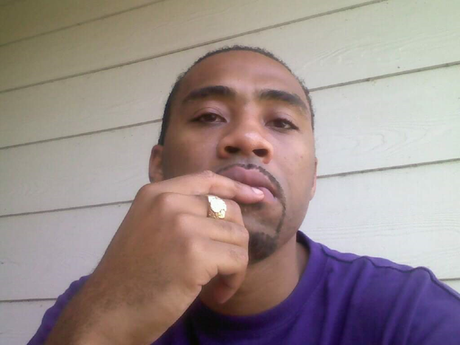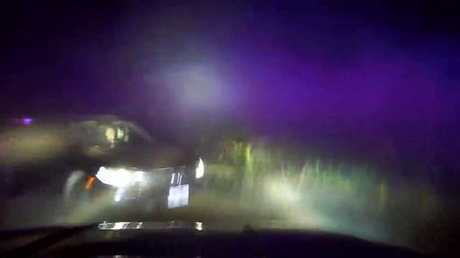This is the third segment of the Shaun Cooks story. The first segment (Five Days to Christmas) and the second segment (Five Conflicting Narratives) provide necessary background to this week’s segment.

A Reliable Witness?
Sheriff’s Deputy Chris White insists that Shaun Cooks fired two shots at him at close range. Cooks claims he never touched a gun the night of the incident. Someone is lying. Right?
Not necessarily.
White comes across as a standup guy. He’s not the kind of man who would knowingly frame an innocent man. To this day, the officer probably believes Cooks tried to kill him.
But the evidence suggests that White’s memory of the relevant fact issues is so unreliable that he can’t be considered a reliable witness.
Ironically, it is White’s honesty under oath that leads me to this conclusion.
At trial, White admitted that he didn’t realize he had fired his Taser until, while passing in front of the headlights of his police car, he saw the Taser wires dangling. Only then did he realize that he must have pulled the trigger.
But to this day, he has no memory of firing his Taser.
White remembers hearing two shots fired, but admits he never saw a gun. All he saw was “a furtive movement” that made him fear the suspect intended to roll toward him, from his belly to his back.
But his visual memory is virtually blank.
All he remembers is the sound of gunfire.
If White discharged his .45 side arm, possibly firing warning shots to encourage compliance, he wouldn’t remember that either. He would only recall the sound of gunfire.
At trial, White was asked if he found the 9mm pistol allegedly belonging to the suspect, or if it was the investigator, J. Beathard, who first discovered the weapon. White’s response suggests he had no clear memory of the event. “I believe myself—somebody found it—may have found it first, but I examined—or I observed it there,” he said.
Did he? Three days later, when White filed a supplemental report, he mentioned that “knuckles” were found in Brandi Acosta’s purse, but said nothing about the discovery of a weapon. If he had a clear memory of this critical discovery, he would have mentioned it.
White claims to have fired two shots at Cooks as the suspect fled in the direction of the Mercedes. Shawn Sayers, the officer who made the actual arrest, contradicts this story at every turn. In Sayers’ version, Cooks wasn’t running toward the Mercedes, he was running along the fence line. More to the point, no shots were fired at all once Sayers arrived at the scene.
Who is lying, Sayers or White?
No one is lying.
The evidence suggests that Sayers has a clear memory of the event while White does not.
A comically substandard investigation
With Cooks in custody, White described the action to first-responders: “I saw he had a gun, I Tased him; these shots started firing.”
Asked to explain this statement at trial, White said, “that’s not what happened, and I apologize for me saying that.” This suggests that, when J. Beathard arrived on the scene, White had a hard time piecing a coherent story together. Upon reflection, White decided that he didn’t see a gun that night, and didn’t fire his Taser until he heard the sound of gunfire.
This suggests that Beathard and White gradually pieced together a semi-coherent story and hoped the case never made it to the courtroom. When it did, counternarratives were eliminated as much as possible. But the initial confusion is still apparent.
How do we explain the curious fact that J. Beathard, the designated investigator in this case, failed to run any of the forensic tests that are obligatory in shooting incidents.
The 9mm wasn’t tested for DNA.
The weapon wasn’t dusted for fingerprints.
The hands and clothing of the suspect, and the weapon itself, weren’t tested for gunshot residue (GSR).
When Beathard discovered the 9mm was registered to “a gentleman in Hearne” he didn’t interview the gun owner or attempt to trace the weapon to Cooks.
Why did Beathard deviate so drastically from standard investigative protocols? Was he simply incompetent, or is there a better explanation?
Beathard’s comically substandard investigation suggests that the gun was what police officers call a “throw down” weapon. We needn’t conclude that Beathard dropped the gun himself. It is more likely that the weapon was placed in its final resting place by one of the officers at the scene with the Hearne PD or the Robertson County Sheriff’s Department. Whatever the case, Beathard was too uncomfortable with the 9mm to perform the usual tests.
There is one simple reason for not testing a gun. The results might blow a hole in the official story. If there was no gunshot residue on the Cook’s hands and there were fingerprints on the gun, but not from the suspect, the defense would have enough reasonable doubt to get an acquittal.
The impact of adrenaline on mind and body
The dashcam recording also reveals Deputy White asking the first officers at the scene to make sure he hadn’t been shot. This is a natural concern. What were the chances that two shots, fired from three feet away, would both miss?
At trial, White explained that, in the aftermath of his ordeal, he was still under the influence of an adrenaline surge. The fact that he felt no pain didn’t mean he hadn’t been shot, but no wounds were discovered.
- Shaun Cooks

- Chris White

Asked at trial how Officer White appeared the night of the incident, Milam County Sheriff’s Deputy Joshua Clouse said, “He was a little bit shaken up. He appeared to be coming down from what we refer to as an adrenaline dump.”
And that was half an hour after the incident.
Most probably, White was in the throes of an adrenaline dump long before the shooting started. For fifteen minutes, he had been racing down a winding two-lane highway at speeds in excess of 100 mph. As he drove, he was in regular radio communication with officers in Milam and Robertson Counties. He feared for his own safety. He worried about the aftermath of a serious wreck—especially with a tiny baby on board. He wondered how he would safely apprehend the suspect when the chase was over.
The psychological impact of high-speed pursuit
High-speed pursuit is controversial. The risks (to police officer, suspects and the general public) are so grave that some experts doubt the pursuit of a fleeing vehicle can ever be justified. Typically, police officers are content to harvest the license number, capture the incident on camera, and arrest the perpetrator at a more advantageous time.
David Blake, a retired California peace officer and a court-certified expert on the use of force, encourages officers to count the cost of high-speed pursuit. “Human performance has been proven to be affected by situational and environmental stressors,” he says. “The sirens, driving speeds, erratic radio traffic, multi-tasking and general thrill of the chase will likely cause a fight or flight response.”
“According to experts,” Alan Abramson notes in the Los Angeles Times, “the mix of danger, fear and speed fuels a rush of adrenaline and anger in police officers pursuing a defiant suspect—a combustible mixture that sometimes ignites when, as it must, the chase comes to an end.”

This surging emotion is partially a response to the defiance demonstrated by the fleeing suspect. “I remember what it was like to be behind the wheel of a police car and involved in a high-speed chase,” Joseph D. McNamara recalls. “The fleeing vehicle ignores your-emergency lights and siren, drives recklessly, creating great danger for innocent people as well as pursuing cops. It is the ultimate disrespect for your authority as a police officer. So, it begins to build in your mind that this person driving so recklessly must have done something terrible in addition to the traffic violations he is accumulating with abandon. Your anger grows into rage as the chase continues.”
But panic, not defiance, is typically the motivation when suspects drive off during a traffic stop. Extensive interviews with prison inmates who fled from law enforcement suggests that, however police officers might feel, defiance of authority rarely causes suspects to flee during traffic stops.
The chase was equally traumatic for Shaun Cooks. When White stepped out of his car, both he and the suspect were fearing for their lives.
Acute Stress Disorder
White and Cooks moved swiftly from the trauma of a high-speed chase to an even more frightening situation. Cooks had good reason to believe that he would be just another Black male gunned down by a panicked police officer. White was scared to death that Cooks was carrying a weapon and might be motivated to use it.
An article in the Mayo Clinic website, states that “dissociative disorders . . . . usually develop as a reaction to trauma” and a key symptom is “memory loss (amnesia) of certain time periods, events, people and personal information.”
A study in the Journal of Forensic Sciences states that memory loss is often associated with Acute Stress Disorder (ASD) which they define as “a sudden, transient change in perception, identity, or memory resulting from a life-threatening traumatic event”.
According to this study, 90% of police officers involved in shooting events “experienced some form of perceptual disturbance”. More to the point, “22% of the officers reported ‘memory loss’ for part of the incident.” This is significant, the study notes, “since an officer may be asked to testify about his or her actions at some point in the future”.
The evidence clearly indicates that Officer White was suffering from Acute Stress Disorder, a physiological reaction that can erase, or seriously distort, an officer’s memory of traumatic events.
It is possible, therefore, that White, Cooks and Sayers are all trying to tell the truth as they know it. Sure there are discrepancies between their stories that cannot be reconciled. That’s what you would expect when three men are asked to recall the same event.
But it gets much more complicated. It is hardly surprising that Chris White struggled to recall the events of that fateful evening: he was suffering from Acute Stress Disorder. It isn’t that White has no memory of the encounter. The problem is that some of his memories were confused while other critically important bits of information were lost to memory altogether.
It’s this simple: a man in this condition is not credible under oath.
